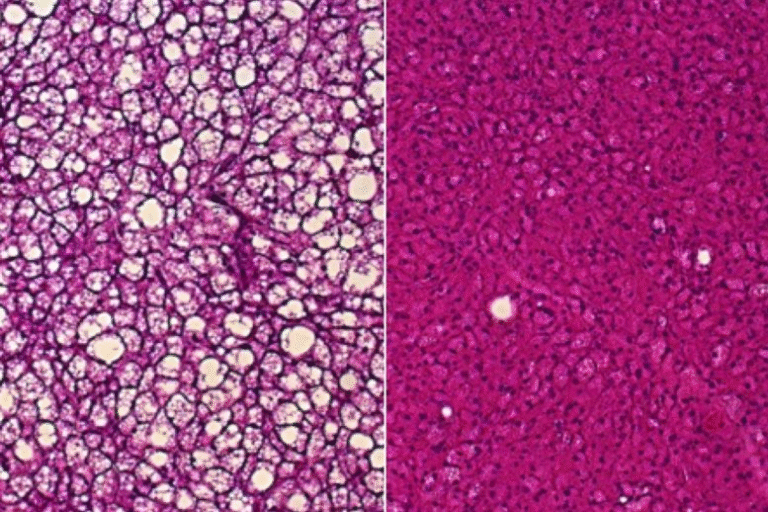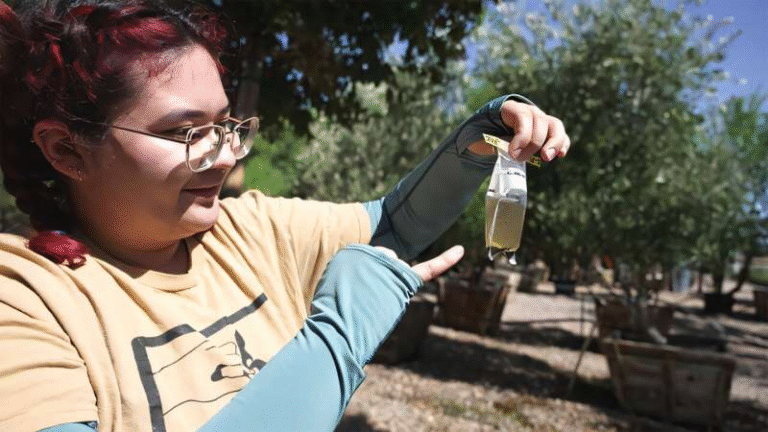Chemists Build iConRNA: A New Tool to Peer Inside the Hidden World of RNA in Cells

A group of chemists from the University of Massachusetts Amherst has created a new computational model called iConRNA, a publicly available tool that offers an unprecedented window into how RNA molecules behave inside cells. This development, published in the Proceedings of the National Academy of Sciences (PNAS), could help scientists understand how cells organize their inner workings — and how things go wrong in diseases like ALS, Huntington’s disease, and certain cancers.
The Challenge of Understanding RNA in Cells
Inside every cell lies a dense, bustling environment packed with proteins, nucleic acids (like RNA), and organelles. Each molecule must perform its job precisely in time and space. When they don’t, cellular chaos follows — leading to serious diseases.
The complexity of this microscopic world has always made it difficult for scientists to visualize how RNA molecules behave and interact. Unlike organelles such as the nucleus or mitochondria, which are enclosed by membranes, RNA molecules float freely in the cell’s cytoplasm. Yet, somehow, they still manage to self-organize into distinct compartments known as biomolecular condensates — small, membraneless droplets that form and dissolve dynamically.
It wasn’t until 2009 that scientists discovered these condensates arise through a process called phase separation — much like how oil separates from water. This mechanism allows biomolecules to cluster together temporarily, perform specific functions, and then disperse when no longer needed.
The malfunctioning of these condensates has been linked to neurodegenerative diseases and cancers, but until now, understanding the physics behind them — especially for RNA-driven condensates — has been extremely challenging.
What Makes iConRNA Different
The new tool, iConRNA, changes that. Developed by Professor Jianhan Chen and Dr. Shanlong Li at UMass Amherst, this model represents a leap forward in how we simulate RNA behavior.
Previous computational models of RNA and proteins were coarse-grained and limited in detail. They could capture basic structure or dynamics, but not both. iConRNA strikes the right balance: it’s detailed enough to reveal how RNA molecules fold, interact, and condense — yet efficient enough to simulate large systems resembling what happens in living cells.
Here’s how it works:
- Each nucleotide in the RNA is represented by six to seven “beads”, simplifying the molecule while preserving key physical features.
- The model includes explicit magnesium ions (Mg²⁺), which are crucial in RNA folding and condensation.
- It can simulate changes in temperature, salt concentration, RNA sequence, and length, and show how these variables affect RNA condensation.
In other words, scientists can now “turn the knobs” — adjusting real cellular conditions — and directly observe how RNA molecules respond.
This feature is especially powerful because RNA phase separation is highly sensitive to small environmental changes. Even slight variations in ion concentration or temperature can decide whether an RNA molecule remains dissolved or joins others to form a droplet.
What the Researchers Found
Using iConRNA, the team explored what drives RNA molecules to condense. Their simulations revealed that multiple forces are at play, including:
- Electrostatic interactions, where magnesium ions bridge negatively charged parts of the RNA backbone.
- Base stacking and base pairing, which stabilize certain RNA shapes and influence how molecules interact with one another.
- RNA folding dynamics, which determine how flexible or rigid a molecule is — and therefore how likely it is to join a condensate.
They discovered that RNA folding competes with condensation. When an RNA is highly folded, it’s less available to form intermolecular interactions that drive condensation. But when it’s more flexible or partially unfolded, it can easily interact with other RNAs, promoting droplet formation.
The model also replicated several experimental findings, such as how certain RNA sequences and lengths affect condensation, and how triplet-repeat RNAs (which are implicated in some neurodegenerative diseases) behave differently from simpler RNA chains.
Why This Matters
The ability to simulate RNA phase separation accurately could transform how scientists study cellular organization and disease mechanisms.
In the past decade, researchers have learned that biomolecular condensates — the tiny, liquid-like droplets formed by proteins and RNAs — play vital roles in gene expression, stress responses, and even embryonic development. When these droplets malfunction, the result can be toxic aggregates or dysfunctional compartments, contributing to disorders like ALS and Huntington’s disease.
By revealing how RNA molecules drive or regulate these condensates, iConRNA could help explain why certain RNAs behave abnormally in disease states. Moreover, because the model is publicly available, other scientists can now use it to test hypotheses, design experiments, and study specific RNAs related to their research.
This open-access nature of iConRNA is a major advantage — making it a shared platform for the global scientific community to explore one of the most complex and fascinating frontiers of modern biology.
A Quick Dive Into RNA and Phase Separation
To better appreciate why this research is significant, it helps to understand RNA and phase separation a bit more.
RNA (Ribonucleic Acid) is one of life’s essential molecules. While DNA stores the genetic blueprint, RNA acts as the active messenger — copying instructions from DNA and directing the synthesis of proteins. But RNA isn’t just a passive messenger. Many RNAs fold into intricate shapes that let them catalyze reactions, regulate gene activity, and form structural components of cells.
Now, phase separation adds another layer of complexity. Imagine a crowded cell where thousands of molecules are floating around. Instead of everything being mixed together chaotically, phase separation allows molecules to self-sort into small, transient compartments — droplets that can concentrate specific molecules for certain tasks.
These droplets are membraneless organelles, such as stress granules and P-bodies, which form and dissolve as needed. The process is reversible and highly regulated — at least, when things work properly.
When this regulation fails, pathological aggregation can occur. This is why phase separation has become such a hot topic in biophysics and cellular biology.
What’s Next for iConRNA
While iConRNA is a powerful advance, it’s only the beginning. The current model focuses mainly on RNA-only systems, meaning it doesn’t yet simulate the complex mixtures of proteins and RNAs found in real condensates. Future versions could incorporate protein–RNA interactions, post-transcriptional modifications, and even active, energy-driven processes inside living cells.
Such extensions would bring simulations even closer to reality and could help scientists pinpoint exactly how misbehaving RNAs contribute to disease.
For now, iConRNA provides a critical bridge between molecular detail and cellular-scale behavior — allowing researchers to finally observe, in fine detail, how RNAs drive the self-organization of life’s inner machinery.
The Bigger Picture
This achievement reflects a growing trend in molecular science: using computational modeling to tackle problems that are too complex for experiments alone. Models like iConRNA don’t replace the lab bench — they amplify it, offering testable predictions that can be verified experimentally.
And beyond the technical side, this work deepens our understanding of one of biology’s great mysteries: how order arises from molecular chaos inside a living cell.
As researchers worldwide begin using iConRNA, we can expect new discoveries about RNA structure, cell organization, and the molecular missteps that lead to disease.
Research Reference:
Driving Forces of RNA Condensation Revealed Through Coarse-Grained Modeling with Explicit Mg²⁺ – Proceedings of the National Academy of Sciences (PNAS, 2025)





